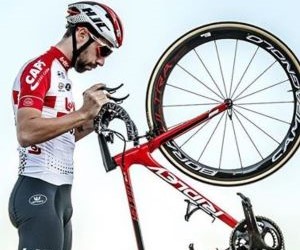Learn how to choose between clipless and flat pedals by comparing efficiency, control, comfort, and riding style to find the right setup for your needs.
HOW CAN I USE RECON VIDEOS AND GPX FILES TO FIND MISPRICED CYCLING STAGES?
In pro cycling, stage outcomes often hinge on fine margins—gradient tricks, wind traps, or final-kilometer road surfaces. Betting markets and fantasy cycling platforms sometimes miss these nuances, creating “mispriced” stages where smart analysis pays off. By leveraging recon ride videos and GPX files, you can decode race dynamics in advance and exploit the gaps. This guide breaks down how to use these tools like a directeur sportif with an edge—whether you’re gaming the odds or planning your own race recon.

Why mispriced cycling stages exist
Cycling stages are complex puzzles. On paper, two routes may seem similar—both labeled as “flat” or “hilly”—but on the road, one might finish on a cobbled uphill kicker into a headwind while the other ends with a sheltered tailwind sprint. Betting markets and fantasy platforms often oversimplify stage profiles, leading to undervalued or overhyped riders. This is where recon videos and GPX data come in—they show the story beyond the elevation chart.
The market relies on surface data
Stage previews on betting platforms usually rely on ASO/organizer-provided profiles and historical outcomes. But that doesn’t capture fresh tarmac, narrow road widths, pinch points, or last-minute course changes. Traders and algorithms base odds on averages—not details. That’s your edge.
Stage terrain is often labeled too broadly (e.g., “flat” vs. “rolling”)
Weather is dynamic and under-modeled
Live conditions like construction or crowd barriers go unaccounted
Recon reveals tactical traps
Riders often perform pre-stage recons, filming the final 20 km or key climbs. These recon videos reveal technical descents, exposed ridgelines, and positioning battles. With GPX overlays, you can map gradient shifts that impact team tactics or neutralize sprinters.
In short, recon and GPX data bridge the gap between perception and reality—exactly where smart picks are made.
How to use recon videos effectively
Recon videos are a window into the real-world flow of a race. Whether shot by teams, influencers, or amateurs, these clips offer detail-rich insight into course dynamics. But to extract value, you need to know how to break them down like a coach—not a casual viewer.
Step-by-step recon analysis process
Find quality sources: Use YouTube channels from pro teams, regional riders, or creators like Velon, LeCol, or Bas Tietema.
Focus on key segments: Fast-forward to final climbs, descents, and last 10 km.
Watch rider behavior: Note shifting, cadence, and line choice—these tell you more than road signs.
Pause and note hazards: Look for sharp corners, roundabouts, road furniture, or poor surface patches.
Cross-reference with weather: Check Windy or SpotWx for wind direction and speed during stage time.
Advanced tactics from recon footage
Pros use recon to determine where to attack or conserve. You can do the same by identifying “hidden climbs” (false flats), wind exposure zones, or narrow entries to climbs where position is key. Riders like Pogacar and Van der Poel often pre-ride and pinpoint these moments—you can too, even from your couch.
Don’t just watch one source. Compare multiple riders' recons for different camera angles and pacing styles. Overlay your learnings with commentary and power data when available—it helps forecast team strategies and who will struggle or shine.
Leveraging GPX files for edge
GPX files provide raw data on route shape, elevation, gradient, distance, and timing. Combine them with mapping software, and you can simulate race conditions from anywhere. You’ll not only visualize the route, but calculate effort demand, optimal attack zones, and stage bias.
Where to find GPX files
Strava uploads from pros and teams
Official race organizer sites (e.g., Giro, Tour, Vuelta)
RideWithGPS and Komoot user uploads
ProTeam recon blogs or training diaries
How to analyze a GPX for value
Import GPX into tools like Strava, VeloViewer, or Golden Cheetah. Look for these markers:
Sharp gradient spikes that may be understated on basic profiles
Flat finishes after tough climbs (good for reduced sprints)
Descent finishes favoring bold descenders over pure sprinters
Wind-exposed segments where breakaways could succeed
Use segment analysis to compare expected times vs actuals from past races or recons. This helps you spot “slow burners” or “over-hyped climbs” that bettors often misjudge. Cross-check this with recon footage for confirmation.
By combining recon video detail with GPX data analytics, you can build a predictive edge few casual fans or even betting models possess. You’re not just watching the race—you’re forecasting its shape, dynamics, and likely victors in advance. That’s real insight.
YOU MAY ALSO BE INTERESTED






